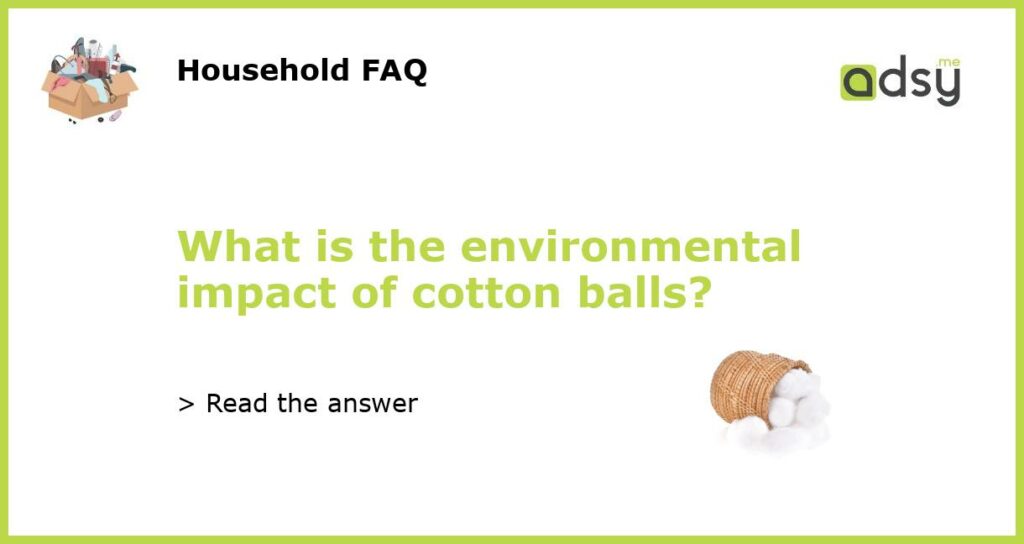The Use of Cotton Balls and Its Environmental Impact
Cotton is a popular material because of its soft and absorbent texture. It is commonly used in various products, including cotton balls, which are typically used for skincare and beauty purposes. However, the production and disposal of cotton balls contribute to environmental problems. In this article, we will explore the environmental impact of cotton balls and how we can reduce our footprint.
Cotton Production and Water Use
Cotton is a crop that requires a lot of water to grow. According to the World Wildlife Fund (WWF), it takes approximately 2,700 liters of water to produce one cotton shirt. This also applies to cotton balls as they are made from cotton fibers. The use of pesticides and fertilizers in cotton production also contributes to water pollution and soil degradation.
The Problem with Single-Use Cotton Balls
Cotton balls are often used once and then thrown away. This creates a significant environmental problem as they end up in landfills where they can take years to decompose. Plastic packaging also contributes to the plastic waste problem. Moreover, the production and transportation of cotton balls require energy, which contributes to greenhouse gas emissions.
Alternatives to Consider
There are alternatives to single-use cotton balls that are more environmentally friendly. Reusable cotton pads are made from sustainable materials and can be washed and reused multiple times. These pads also come in recyclable packaging. Another option is to use a washcloth or a biodegradable cotton swab.
Reducing Your Cotton Ball Footprint
There are several things you can do to reduce your cotton ball footprint. You can switch to environmentally friendly alternatives, such as reusable cotton pads. You can also reduce the number of cotton balls you use by switching to a multi-use skincare product or using a washcloth. Additionally, you can dispose of cotton balls properly by recycling them or by composting them if they are made of 100% cotton.






